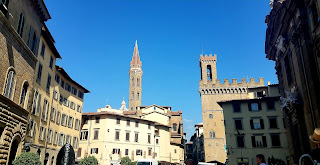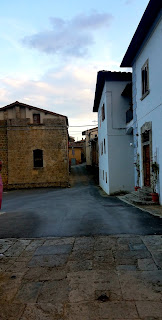The last 2 nights of our exploration of northern Italy were spent in incomparable Venice. The city is built on more than 100 small islands in a lagoon in the Adriatic Sea. It has no roads or cars, just canals including the Grand Canal thoroughfare lined with Renaissance and Gothic palaces.
The islands are separated by canals and linked by over 400 bridges. It is truly a wonder and not to be missed.
We were transported between the islands on water taxis like this.
 |
| The Rialto Bidge over the Grand Canal |
The city has been an inspiration for many artists through the ages including writers such as Marco Polo, Shakespeare, Henry James and Ezra Pound. It has also been the setting for a myriad of motion pictures, including 3 James Bond movies.
Here are photos from a few of the sites around Venice.
 |
| St. Mark's Basilica |
 |
| The Doge's (magistrate's) Palace |
 |
| The ceiling in the Doge |
 |
| Mel's photo of the Bridge of Sighs that prisoners traversed on their way to a jail cell from which they would not return |
One of the islands in Venice is Murano Island, famous for its exquisite glassware production. We took a water taxi there, saw a glassblowing demonstration and did some shopping at the factory.
















































